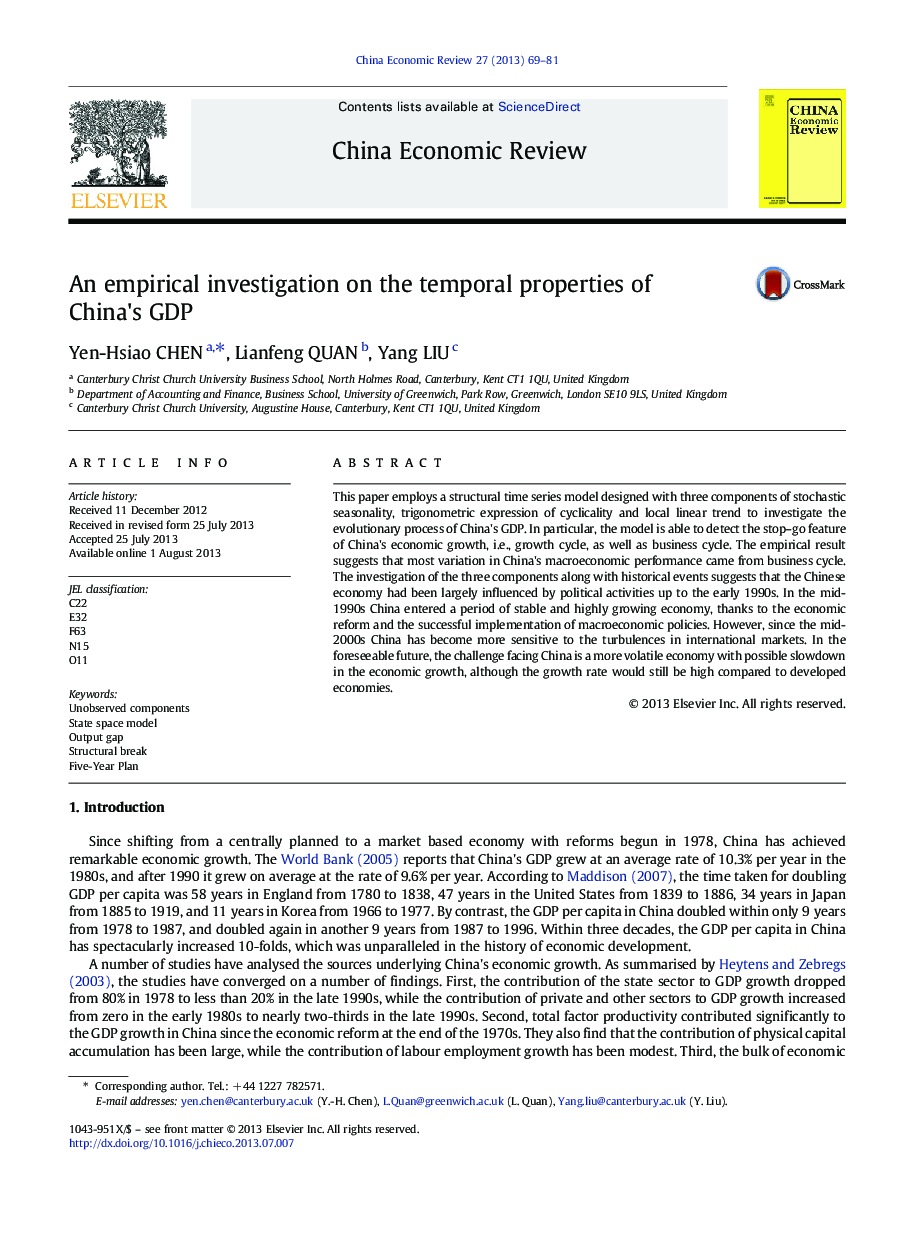| Article ID | Journal | Published Year | Pages | File Type |
|---|---|---|---|---|
| 5047668 | China Economic Review | 2013 | 13 Pages |
â¢structural time series model is employed to analyse China's GDP.â¢Most variation in China's GDP came from business cycle.â¢China's economy was largely influenced by political events before the mid-1990s.â¢China enjoyed a highly growing yet stable economy since the mid-1990s.â¢China's economy became more sensitive to international events since the mid-2000s.
This paper employs a structural time series model designed with three components of stochastic seasonality, trigonometric expression of cyclicality and local linear trend to investigate the evolutionary process of China's GDP. In particular, the model is able to detect the stop-go feature of China's economic growth, i.e., growth cycle, as well as business cycle. The empirical result suggests that most variation in China's macroeconomic performance came from business cycle. The investigation of the three components along with historical events suggests that the Chinese economy had been largely influenced by political activities up to the early 1990s. In the mid-1990s China entered a period of stable and highly growing economy, thanks to the economic reform and the successful implementation of macroeconomic policies. However, since the mid-2000s China has become more sensitive to the turbulences in international markets. In the foreseeable future, the challenge facing China is a more volatile economy with possible slowdown in the economic growth, although the growth rate would still be high compared to developed economies.
